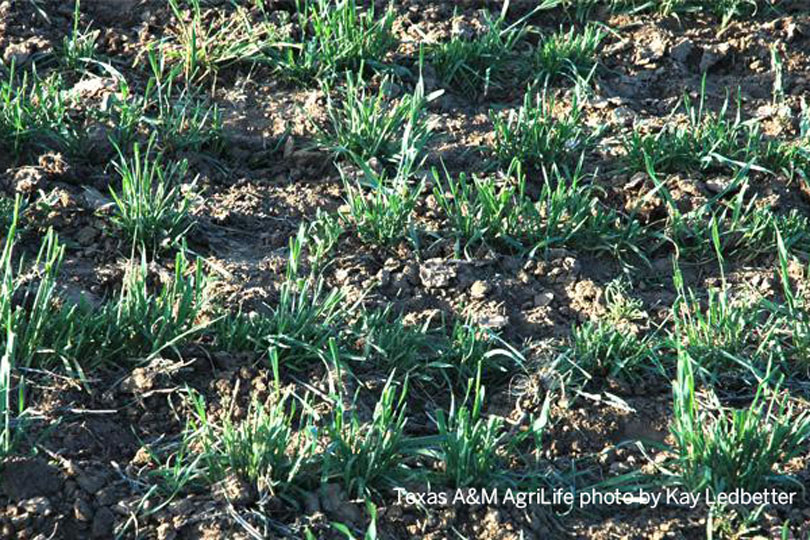By Justin Walker
Communications Specialist
Wheat is expected to see reduced yields this season, despite recent rains, according to Texas A&M AgriLife Extension Service experts.
While some areas might have a successful wheat crop this year, the state as a whole does not look great, Dr. Clark Neely, Texas A&M AgriLife Extension state small grains and oilseed specialist, said.
“Wheat acres went up statewide, from 4.7 million last year to 5 million this year, but most of that is in the High Plains and Rolling Plains where we have the worst drought,” Neely said. “Conditions are better in the Blacklands, but it won’t make much difference in the statewide wheat crop, because there are not many acres there.”
Neely said farmers in the High Plains will make a crop with irrigation, but will only see about half of what they would like to. He added that dryland is in really rough shape.
“Without additional moisture this spring, it is difficult to see how many of the dryland acres in the High Plains are going to make a crop, some of which has already droughted out or never emerged,” he said.
East of Vernon has seen nice rainfall recently, which has placed the area in better shape than further west, Neely said. Fields in the eastern portion of the Rolling Plains could get 20 bushels per acre, while the western portion might make 10-15, optimistically.
“Another issue is some late planted wheat is just now germinating and that will not have time to vernalize, because there are not enough chilling hours left in the season,” Neely said. “It will stay vegetative and won’t produce a seed head or will be poorly tillered. Anything that germinated mid-February or later is going to be doubtful.”
Neely said the wheat crop east of I-35 was looking good despite a dry fall and beginning of 2018. The Dallas-area saw a record month in February for rainfall, which will help the crop in the area.
South Texas had very few acres planted due to the price of wheat, he said.
Dr. Jourdan Bell, AgriLife Extension agronomist, said while early planted wheat had good stands early on, they have used a lot of the subsoil moisture.
“If the stands are being maintained under irrigation, they are still looking good,” she said. “If they are on dryland, they are looking very poor.”
Bell said any late-planted wheat either has not emerged or emerged with very poor and uneven stands.
“But wheat is very hardy,” Bell said. “I would never want to write off a wheat crop too early. We will see a reduced yield on many fields, but if we receive some timely rains moving forward in the spring, there is the potential that poor stands could still make a wheat crop.”

